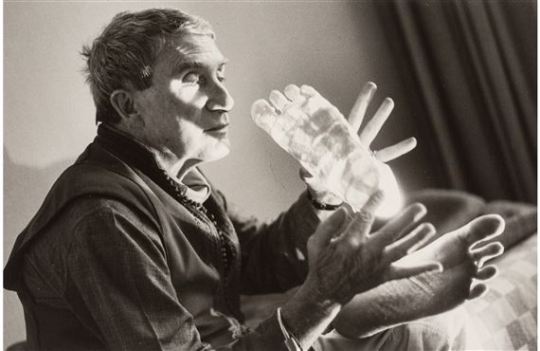Text

Bolesław Nawrocki (1877-1946) — Orestes pursued by the Erinyes (oil on canvas, 1902)
296 notes
·
View notes
Text

Sergio Arcos — Fertilization Portal (oil on canvas, 2018)
1K notes
·
View notes
Photo
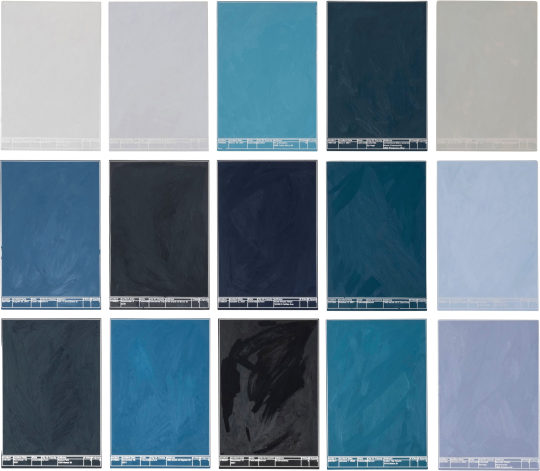
Talya Feldman
GALERIE VERA MUNRO
Heilwigstrasse 64
Nov 15 - Apr 14 2022
Grief is Data: Cut from Blue Sky, 2022
Oil on aluminum plates
15 plates, each 45 x 30 cm,
overall 140 x 160 cm (Fel 001)
268 notes
·
View notes
Photo
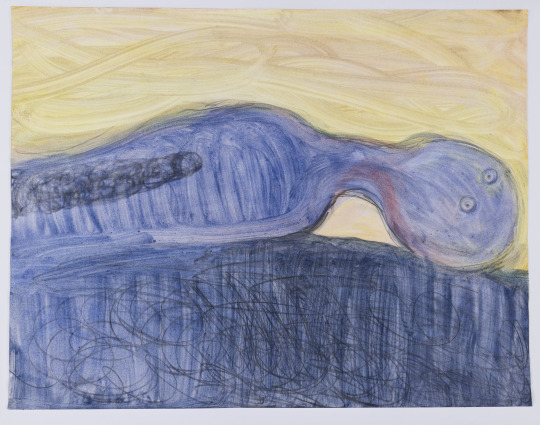
Miriam Cahn, liegen, 31.1.95. Photo François Doury
162 notes
·
View notes
Photo

Brion Gysin “Plateau Beaubourg” (1974); slight cut by me
2 notes
·
View notes
Text
“We remember back in 1986 when Brion Gysin was becoming ever more sick. We visited him the week before he dropped his body. At one point, he asked me to go out and have a coffee while the funeral staff came to measure him for a coffin. He was pale, as if he were literally fading away from reality and becoming semitransparent. We took a Polaroid, one of our prized possessions. “Gen,” he said, “I can’t take this pain any longer. I need to go.” Our heart faltered for a second. He was our mentor, our teacher, our engine of hope. And he was leaving. We said to him, very sincerely and seriously, “I’m going to make sure that nobody forgets about how important your work is until it gets recognized.” It became one of our life tasks. To proselytize his works, his ideas; keep his books and artworks available and influential. This is what we’ve done. He deserved it. He generated the most important techniques and tools of the last century for short-circuiting control and moving the culture in a new direction.”
— from NONBINARY by Genesis P-Orridge
20 notes
·
View notes
Text
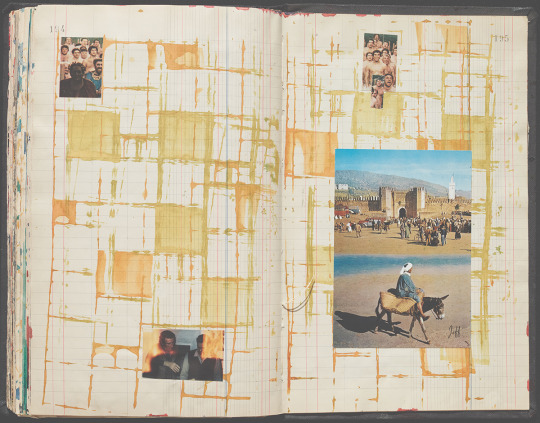
❝ The way I make my collages can provide some insight into my usual creative process. Whether it’s writing a script, making a piece of music, or shooting a film, I’m always drawn toward variations and repetitions. Very often with all of these forms, I try to place seemingly disparate elements beside one another. I always start by gathering materials for quite a long time that relate to some idea that I’m starting to form. Once I have enough of these things gathered, then I sit down and, say, write a script out of them. It’s not exactly the same procedure between each medium, but my work is definitely defined by this process of gathering before making.
[...]
I saw William Burroughs make his journals and scrapbooks while I was working on the set [of Burroughs: The Movie (1983)]. They were all cutups and a kind of re-manipulation of information, both images and words. He and Brion Gysin used these methods to construct their own texts. Seeing this firsthand impacted the way I work and, of course, the collages I’m making today. ❞ *
17 notes
·
View notes
Text
“The most desirable state. In one sense a special use of words and pictures can conduce silence. The scrapbooks and time travel are exercises to expand consciousness, to teach me to think in association blocks rather than words. I’ve recently spent a little time studying hieroglyph systems, both the Egyptian and the Mayan. A whole block of associations—boonf!—like that! Words—at least the way we use them—can stand in the way of what I call nonbody experience. It’s time we thought about leaving the body behind.”
— William S. Burroughs • Writers At Work: The Paris Review Interviews, Third Series
16 notes
·
View notes
Text

Do you want a model sir? c.1885 by Lindsay Bernard Hall (English-born Australian, 1859–1935)
466 notes
·
View notes
Photo

Otto Ritschl (German, 1885–1976) - Komposition, Oil on canvas, 80 x 65.5 cm (1950)
145 notes
·
View notes
Photo
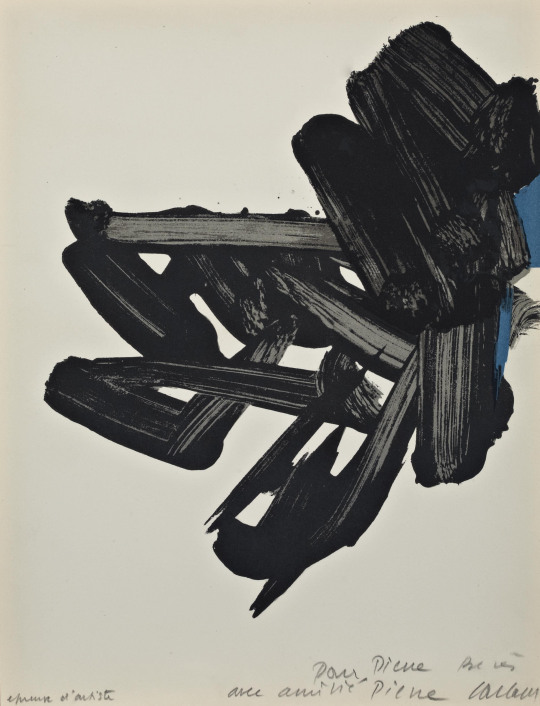
Pierre Soulages (French, 1919-2022) - Lithographie No. 17, color lithograph, 33,8 x 25,9 cm (1964)
236 notes
·
View notes
Text
“Cinema not only puts movement in the image, it also puts movement in the mind. Spiritual life is the movement of the mind. One naturally goes from philosophy to cinema, but also from cinema to philosophy.”
— The Brain is the Screen, Interview with Gilles Deleuze
129 notes
·
View notes
Text
“The fundamental problem of political philosophy is still precisely the one that Spinoza saw so clearly: Why do men fight for their servitude as stubbornly as though it were their salvation?”
— Gilles Deleuze
53 notes
·
View notes
Text
Even the most repressive and the most deadly forms of social reproduction are produced by desire within the organization that is the consequence of such production under various conditions that we must analyze. That is why the fundamental problem of political philosophy is still precisely the one that Spinoza saw so clearly, and that Wilhelm Reich rediscovered: "Why do men fight for their servitude as stubbornly as though it were their salvation?" How can people possibly reach the point of shouting: "More taxes! Less bread!"? As Reich remarks, the astonishing thing is not that some people steal or that others occasionally go out on strike, but rather that all those who are starving do not steal as a regular practice, and all those who are exploited are not continually out on strike.
Gilles Deleuze & Feliz Guattari, Anti-Oedipus: Capitalism and Schizophrenia (Trans. Robert Hurley, Mark Seem, and Helen R. Lane)
570 notes
·
View notes
Photo
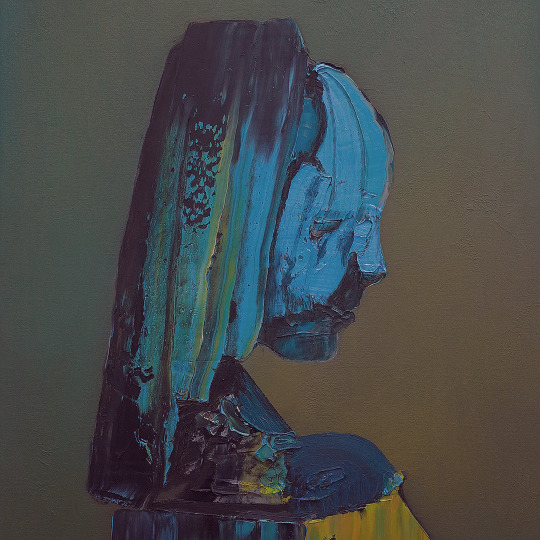
Everywhere at The End of Time by The Caretaker
Artwork by Ivan Seal
16 notes
·
View notes

